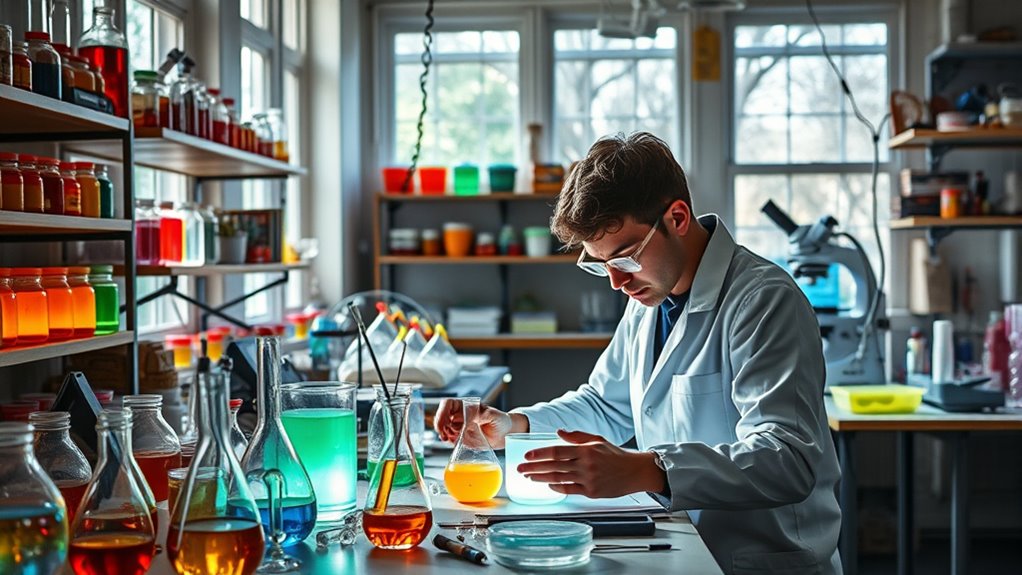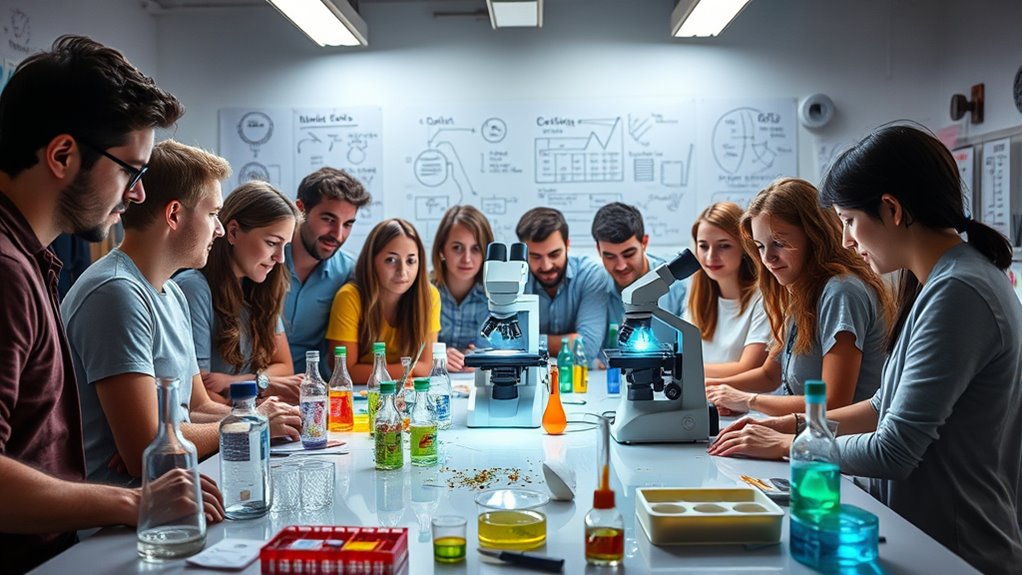DIY biohacking lets you experiment with biology and take control of your health. You can modify organisms, tweak your gut microbiome, and create personalized health solutions in your own space. It’s essential to be aware of safety regulations and ethical practices to guarantee responsible experimentation. By engaging with local biohacking clubs and online forums, you can share knowledge and innovate collaboratively. There’s so much more to explore in this exciting field.
Key Takeaways
- DIY biohacking empowers citizen innovators to experiment with biology, enabling personalized health enhancements and genetic modifications at home.
- Individuals can modify organisms to produce beneficial compounds or optimize their gut microbiomes for improved health.
- Safety regulations and legal frameworks guide biohackers to ensure responsible practices and prevent public health risks.
- Ethical considerations are crucial in biohacking, emphasizing responsible experimentation and proper disposal of biological materials.
- Engaging with biohacking communities fosters collaboration, knowledge sharing, and collective expertise for safer experimentation.

Have you ever wondered how you can take control of your own biology? The world of DIY biohacking is opening up exciting possibilities, allowing you to experiment with genetic modification and explore the frontiers of personal health and enhancement. As citizen innovators, you have the chance to harness your creativity and curiosity, diving into the domains of biology that were once reserved for laboratories and professionals.
Imagine being able to modify your own organisms or even tweak your gut microbiome to optimize your health. With the right tools and knowledge, you can create your own biohacking experiments at home. Whether you want to grow glowing bacteria or cultivate probiotics that enhance your well-being, the opportunities are vast. However, you need to be aware of the safety regulations that govern these activities. It’s vital to keep yourself and your environment safe while engaging in such innovative practices.
Explore the thrilling world of DIY biohacking, where you can modify organisms and enhance your health from home—safely and responsibly!
Understanding the implications of genetic modification is essential. You could potentially create organisms that produce beneficial compounds or eliminate harmful ones, but this comes with responsibilities. You should always be informed about the ethical considerations and legal frameworks surrounding your experiments. Many countries have specific safety regulations in place to ensure that biohacking doesn’t pose risks to public health or the environment. Familiarizing yourself with these laws will not only keep you compliant but also help you appreciate the significance of your work. Additionally, consider the potential benefits of biohacking, such as the ability to optimize health through personalized interventions that can lead to improved well-being.
As you set out on your biohacking journey, consider connecting with others in the community. Online forums and local biohacking clubs can be fantastic resources for sharing ideas and experiences. You’ll find that many individuals are enthusiastic to collaborate, providing insights that can enhance your projects. This collaborative spirit helps you learn safer techniques and better understand the complexities of biological manipulation.
DIY biohacking can be a thrilling adventure, but it requires a cautious approach. Always prioritize safety in your experiments. Use protective gear, maintain a clean workspace, and dispose of biological materials responsibly. By following best practices and adhering to safety regulations, you can enjoy the benefits of biohacking without compromising your health or that of others.
Frequently Asked Questions
What Materials Do I Need to Start Biohacking at Home?
To start biohacking at home, you’ll need some basic DIY equipment like petri dishes, pipettes, and a microscope. Make sure to acquire sterile techniques by using gloves and disinfecting surfaces to avoid contamination. You’ll also want to gather growth media, such as agar, and perhaps some simple genetic material if you’re feeling adventurous. Always prioritize safety, and consider joining online communities for tips and support as you experiment with your projects.
Are There Legal Restrictions on DIY Biohacking?
Sure, go ahead and turn your kitchen into a lab! Just remember, you might run into some legal restrictions. Regulatory challenges can be a real buzzkill, especially if you’re tinkering with things that might be covered by intellectual property laws. It’s like trying to bake a cake while dodging pesky food critics. So, before you start experimenting, check the rules in your area to avoid any legal surprises!
How Can I Ensure Safety While Biohacking?
To guarantee safety while biohacking, you should prioritize ethical considerations and effective risk management. Start by researching techniques and materials thoroughly, making sure they’re safe and legal. Always work in a sterile environment and use proper protective gear. Consider joining a community to share knowledge and experiences, which can help you learn from others’ mistakes. Finally, keep track of your experiments and their outcomes to refine your approach and minimize potential risks.
What Are Common Mistakes Beginners Make in Biohacking?
Beginners often make blunders in biohacking, like neglecting ethical considerations and skimping on solid experimental design. You might plunge into without thorough research, leading to risky outcomes. Another mistake is overlooking the importance of documentation, which can hinder progress and safety. Additionally, rushing results can result in flawed findings. Take your time, plan meticulously, and always prioritize ethics to guarantee a successful and responsible biohacking journey.
Where Can I Find a Biohacking Community or Support Group?
You can find a biohacking community through online forums like Reddit or specialized Facebook groups, where you can connect with like-minded individuals. Local meetups are also a great option; check platforms like Meetup.com for gatherings in your area. Attending workshops or events can deepen your understanding and expand your network. Engaging with both online and offline communities will help you stay motivated and learn from others’ experiences.
Conclusion
Just like a gardener tending to a wildflower patch, you can cultivate your own path in the world of DIY biohacking. Embrace the spirit of innovation, nurturing your curiosity and creativity as you experiment with biology. Each small project you undertake is a seed planted in the fertile soil of discovery. Who knows? You might just harvest groundbreaking ideas that could change the landscape of science as we understand it. So grab your tools and start growing!










